Are you evaluating web hosting providers on different aspects of your website? One of your most important considerations must be – How much bandwidth do I need for my website? If that holds, this article will help you find an answer to this question.
We’ll cover the factors influencing the bandwidth requirements and tips for optimizing your overall usage. Additionally, you’ll get to know the ways to assess your current usage and overall bandwidth needs.
Lastly, we’ll help you choose the right hosting plan based on your bandwidth requirements. Let’s begin with learning the aspects that determine your bandwidth needs.
Factors Influencing Bandwidth Requirements
Your website bandwidth is the amount of data that can be transferred between your server and website visitors. How much bandwidth your website consumes depends on several factors, including:
Website Traffic
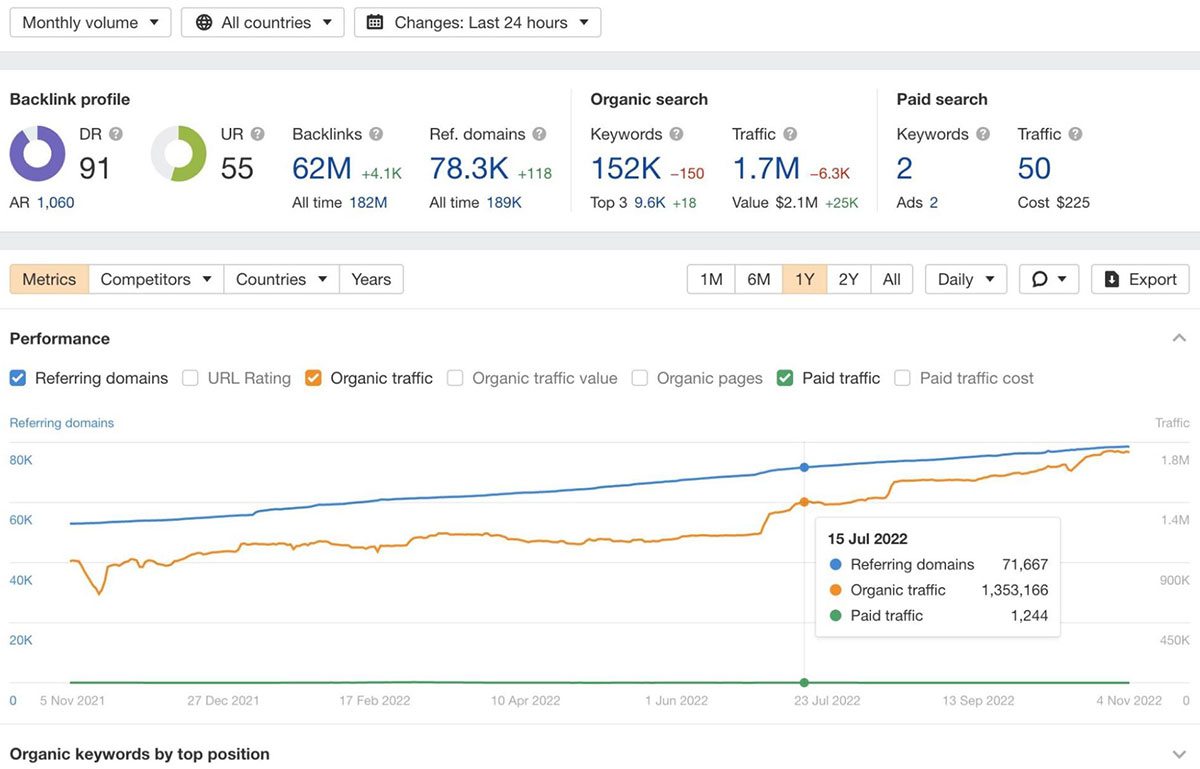
The most important determinant of your bandwidth needs is your website traffic. More visitors to your site will lead to more data transfer. Thus, high-traffic websites demand more bandwidth when compared to low-traffic ones.
For instance, news portals, popular blogs, and E-commerce websites generally have larger visitor counts. So they will require more bandwidth than personal websites.
You need to consider two significant factors when calculating your bandwidth requirements based on your website traffic:
1. Current Traffic
Consider your current traffic and assess the bandwidth required to handle it. Don’t forget to take into account the traffic spikes that your website might be experiencing.

If there is a sudden inflow of users, your hosting account needs to be ready to accommodate it. Your website will be able to handle more visitors at the same time if it has more bandwidth.
2. Expected Growth
If you expect your website traffic to grow in a couple of months, it is advised to purchase additional bandwidth. Upgrading your hosting package with more bandwidth in advance will prepare you well for the future.

It will help your website accommodate additional traffic that comes with the expected growth in the number of visitors. Plus, you’ll avoid any downtime.
Content Types
The type of your website content is another determinant of your bandwidth needs. Some websites, even in the same niche, consume less bandwidth than others.
For instance, you might be sharing your views through a blog site without sharing a lot of images. On the other hand, you might be running a video streaming website with minimal textual content. The bandwidth requirements of both these websites will differ a lot.
Let’s see which content format consumes the most bandwidth:
1. Text

Textual content has the lowest bandwidth needs. If most of your website content is in the text format, your web page size will remain smaller. Smaller pages demand lower bandwidths. Therefore, your overall bandwidth needs will be limited.
2. Images

Images consume more bandwidth than textual content. They tend to increase the size of your web pages. Consequently, your website consumes a larger bandwidth per visit on such pages. Also, high-resolution images require more bandwidth than low-resolution ones.
3. Videos

Videos are the most demanding content type when it comes to bandwidth. You need to invest the most in website bandwidth when you have a lot of audio and video files. Having enough bandwidth will ensure uninterrupted video watching for your visitors.
Website Functionality
Your website functionality is yet another factor influencing your bandwidth requirement. Some sites, like personal blogs, are basic static websites. On the other hand, some are dynamic websites. Today, many websites are a hybrid version of these two website types.
Let’s see how your website functionality affects your bandwidth needs:
1. Basic Static Websites

Static websites consist of fixed pages. Their content remains the same unless you update it manually. These sites do not have any server-side coding and are limited in functionality.
Bandwidth needs for a static website will be lower. Such websites do not have complex programming, any Content Management System (CMS), or other advanced tools. So they are not heavy on the server and consume fewer resources, including bandwidth.
2. Dynamic Websites (CMS, E-commerce)

Dynamic websites utilize server-side programming to generate content. They rely on database queries to deliver personalized user experiences.
Such sites have dynamic content where the output depends on the user input. For instance, E-commerce websites update individual carts of your shoppers without you performing any updates at the back end.
Since dynamic websites have complex coding and utilize multiple advanced tools, they demand high bandwidth. However, these websites offer much more functionality than static ones.
File Downloads and Uploads
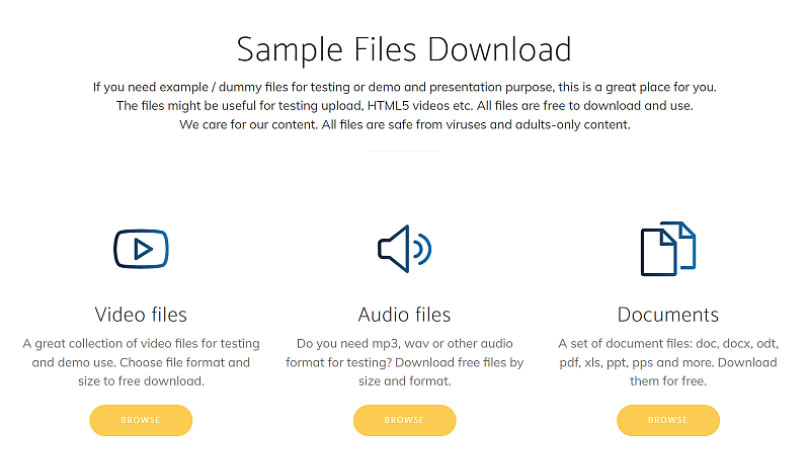
Your bandwidth requirements also depend on file downloads and uploads carried on your website.
If you do not allow your visitors to download or upload files on your website, you do not need much bandwidth. However, if your website visitors can upload or download files from your site, your bandwidth requirements will increase.
Third-Party Services and Integrations

Another important factor influencing your website bandwidth requirement is external integrations and third-party services.
Your bandwidth needs will be limited if your website does not have any third-party integrations. On the other hand, websites using third-party services and integrations demand more bandwidth.
The more the number of integrations, the higher will be your bandwidth needs. For instance, an E-commerce website will consume more bandwidth than a personal blog since it utilizes multiple integration systems.
How much bandwidth do I need for my website?
You can easily calculate your website bandwidth needs even as a beginner. However, you need to estimate a few statistics before you determine your website bandwidth requirements.
Let’s check out the calculation formula and other important considerations in finding out your bandwidth needs:
Bandwidth Calculation Formula
You must be aware of your average page size and expected monthly visitors. Additionally, you need to determine the number of pages a user might visit on your website.
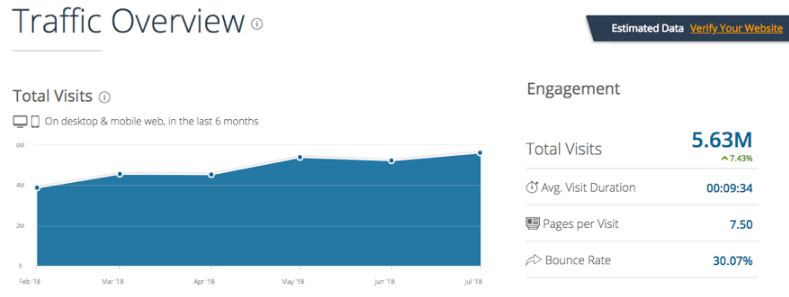
Once you know these numbers, use the formula below to calculate your bandwidth needs.
Bandwidth = Average page size X Number of expected monthly visitors X Average page visits of each user in a month
Let’s take an example for a better understanding of bandwidth calculation:
Say, you have an average page size of 40 KB and expect to receive 20,000 visitors each month. Also, you expect each of your website users to visit 2 pages on average.
Your bandwidth = 40 KB average page size X 20,000 visitors X 2 average page visits
This equates to 16,00,000 KB
Let’s convert it into GBs:
1 MB = 1000 KB and 1 GB = 1000 MB
So 16,00,000 KB = 1600 MB or 1.6 GB
Thus, your bandwidth requirements are 1.6 GB as per our example above. However, we recommend keeping a margin of 50% to handle unexpected traffic spikes.
Since 50% of 1.6 GB is 0.8 GB, let’s add this number to our calculation result
1.6 GB + 0.8 GB = 2.4 GB
Therefore, you need to purchase a web hosting plan offering at least 2.4 GB of bandwidth. It will be sufficient to cover your monthly bandwidth needs.
Estimating Daily, Monthly, and Yearly Bandwidth Needs
It is extremely important to correctly estimate your daily, monthly, and yearly bandwidth needs.
If you have a plan with lower bandwidth than truly required, your website will load slower. On the other hand, investing in a plan with more than the required bandwidth will lead to overspending.
So, determining your website bandwidth needs allows you to control your hosting budget. At the same time, it helps in improving your website performance and user experience.
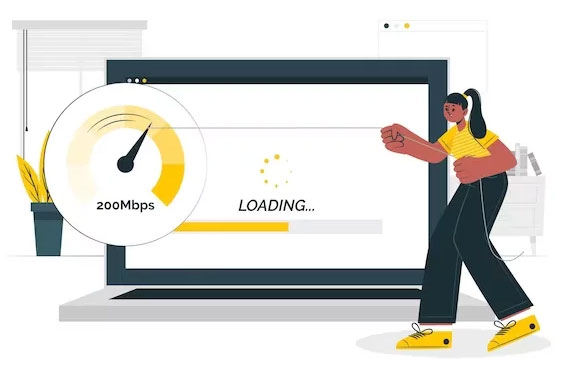
You only need to know the three important numbers we discussed above to calculate your website bandwidth. The formula above allows you to determine your monthly bandwidth needs.
You can easily calculate your daily and yearly bandwidth requirements with the same formula. For that, you need to know the same three numbers for these terms. Let’s see the formulas below:
Daily Bandwidth = Average page size X Number of expected daily visitors X Average page visits of each user in a day
Yearly Bandwidth = Average page size X Number of expected yearly visitors X Average page visits of each user in a year
Don’t forget to add a 50% margin to the results you get above. It will help cover any unexpected traffic spikes that might occur from, say, one of your blog posts going viral on social media.
Additionally, you need to notice your month-on-month growth in website statistics. Consider it when calculating your yearly bandwidth needs.
Considering Peak Usage Times
Apart from the unexpected spikes, there is another factor that you must consider when calculating your bandwidth needs. Every business has a peak usage time during the year.

For instance, an E-commerce website selling spooky clothing might experience a traffic surge during Halloween. Another example could be a website reviewing tech products. It can experience peak usage during product launches.
Your website bandwidth needs will drastically rise during these periods. So, you must determine these peak usage times for your specific business. It will help you in preparing for the upcoming traffic surges well in advance.
Assessing Current Bandwidth Usage
It is important to assess your current bandwidth usage and keep an eye on it. As your website grows, it will start consuming more bandwidth. So tracking your bandwidth usage regularly will help you upgrade the hosting plan on time.
Let’s see the ways to assess your current bandwidth usage below:
Using Hosting Control Panel Statistics
It is possible to directly find out your bandwidth consumption from the control panel itself without performing any calculations. Since cPanel is the most widely used control panel, let’s see how to check your consumption through it:

- Log in to your Hosting account and enter the cPanel.
- Click “Bandwidth” under the “Metrics” section.
- You will be able to see your daily, weekly, and yearly bandwidth consumption in graphical forms here. Consider utilizing these graphs for determining traffic spikes during specific times in a day or week.
- Scroll down further to check your monthly bandwidth usage.
If you do not want to go deeper, you can also check your overall bandwidth consumption. It is displayed in the “Statistics” section of the cPanel.
If your host utilizes some other control panel, you might find your bandwidth usage where it shows other statistics. It is always best to contact customer support if you are unable to find this number.
Web Analytics Tools
Apart from your hosting control panel, you can also utilize web analytics tools to determine your current bandwidth usage. Tools like Google Analytics, Pingdom, and Open Web Analytics help you track and measure several statistics.
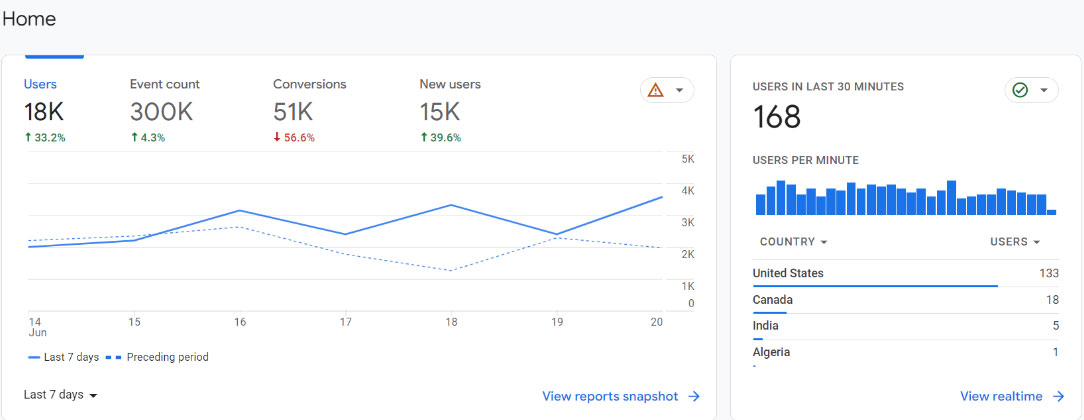
It is possible to check your website traffic, calculate page size, and more with these tools. You can utilize all the collected information to assess your current bandwidth consumption.
Server Logs Analysis

Another great method to determine your current bandwidth usage involves accessing your server logs. You will get insights into your visitor count, page views per visit, and peak traffic periods among other statistics.
You can access your server logs from your hosting account. Look for the file manager section in your hosting control panel for server logs analysis.
Tips for Optimizing Bandwidth Usage
Since you receive limited bandwidth with your hosting plan, it is best to utilize it efficiently for optimal performance.
Here are some useful tips for optimizing bandwidth usage:
Image Compression Techniques
Images consume a lot of your website bandwidth when a user visits your website. Compressing them will help you save a lot of your monthly bandwidth usage.
It is possible to automate the image compression task using WordPress plugins. We recommend the free WP plugin Smush to prevent yourself from all the manual hassle.
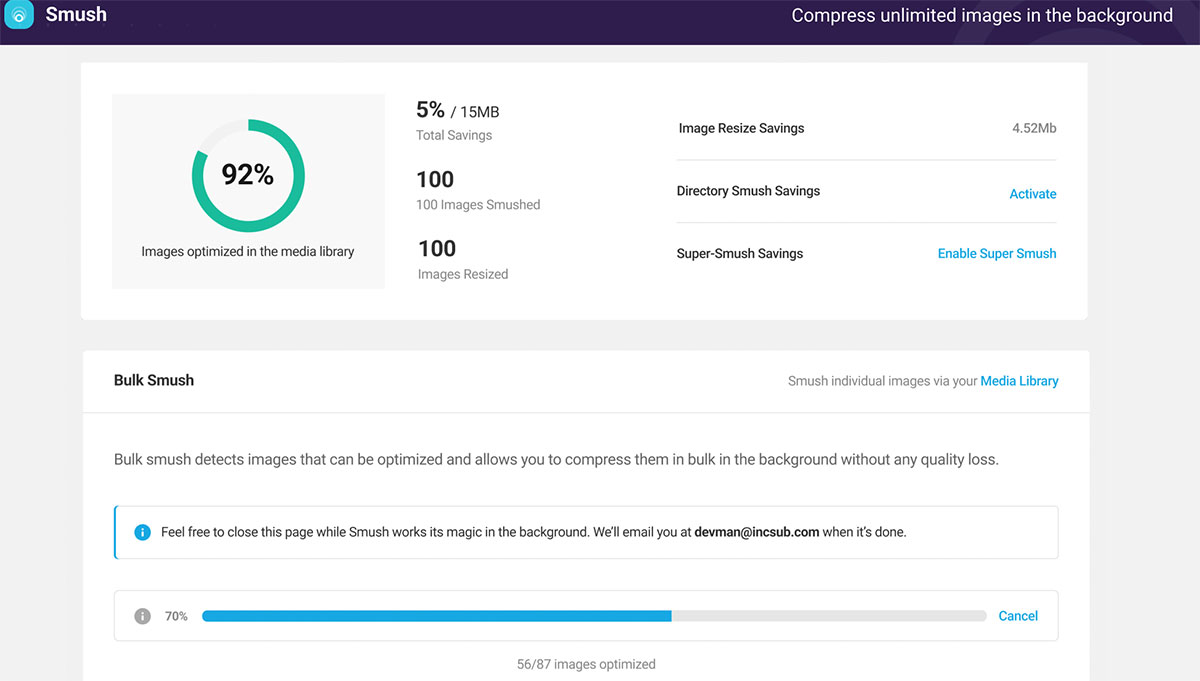
Content Delivery Network (CDN) Integration
A Content Delivery Network or CDN is another great tool to minimize your bandwidth usage. It utilizes proxy servers to reduce the load on your main server.
Using a CDN will boost your website performance by generating cached versions of your web pages. Then, your main server will only be burdened with new requests. The proxy servers handle all repeat requests from your visitors.
Since CDN takes off much of your website server’s load, you will save a lot of your bandwidth. So consider integrating your website with a reliable CDN like Cloudflare to optimize your bandwidth usage.

Minimizing HTTP Requests
The number of HTTP requests to your server depends on the quantity of resources that your website utilizes. More HTTP requests lead to the consumption of more bandwidth. So it is important to minimize them for optimal website functioning.
You can consider combining the JavaScript and CSS files to reduce HTTP requests. Additionally, minify JS, CSS, and HTML to further minimize these requests. We recommend using W3 Total Cache and Fast Velocity Minify to perform these tasks.

Caching Strategies
Apart from CDN caching, there are several other caching strategies you can utilize. Look for page caching, browser caching, database caching, server caching, and object caching to minimize your bandwidth consumption.
Utilizing the power of caching will not only save your bandwidth but also speed up your website. Consider using the W3 Total Cache plugin that we recommended above as well. Enable different cache settings one by one to prevent any website breakdown.
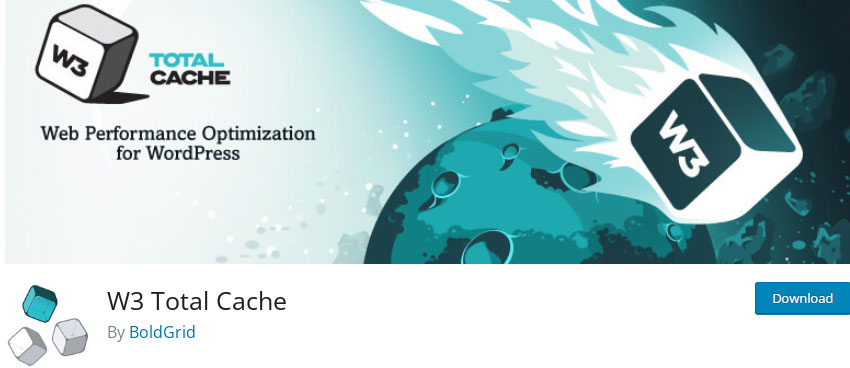
Choosing the Right Web Hosting Plan
Consider your current bandwidth usage and jump in future consumption when choosing the right web hosting plan.
Here are some important factors to look for:
Shared hosting is generally the starting point for all website owners. If your bandwidth needs are limited, go for a shared hosting plan.
A Virtual Private Server or VPS is suitable for growing websites. VPS plans offer more bandwidth than shared hosting plans. So if you have a medium-sized website with decent traffic, choose a VPS.

Dedicated servers come with maximum bandwidth since a whole of the server resources are available for your website.
These plans provide the maximum bandwidth and are the costliest ones too. Therefore, invest in a dedicated server only when your bandwidth usage is extremely high.
Bandwidth Allocation in Different Hosting Plans
Hosting providers offer multiple plans under shared, VPS, and dedicated hosting types. Carefully analyze the bandwidth availability in each of these plans. Match it with your current bandwidth needs before finalizing a hosting plan.
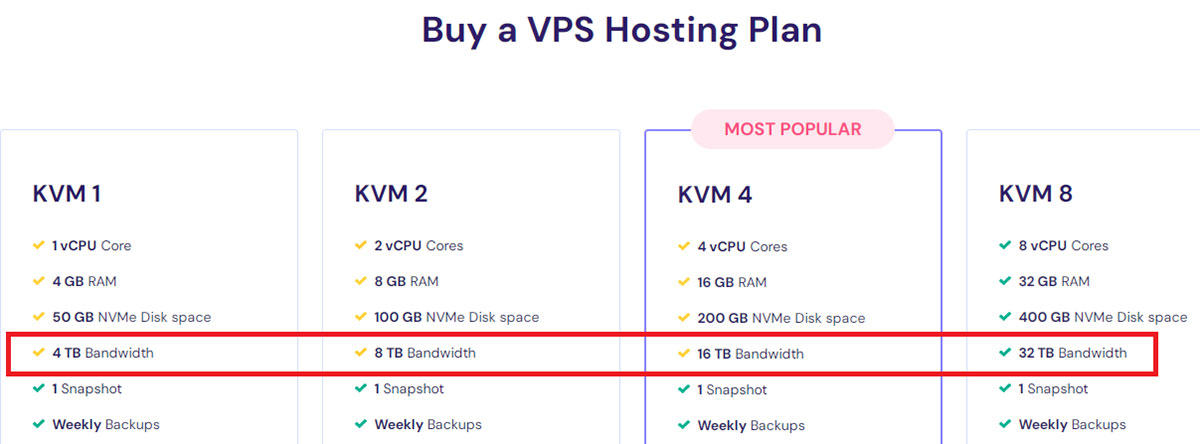
When in doubt, you can always begin with the entry-level plan in the hosting type you select. Upgrade the plan or add in more bandwidth (if the host allows) when your website demands more of it.
Scalability Options
Your web hosting provider must be able to offer easy scalability. Look for the availability of a lot of plans with incremental server resources. The company must be able to upgrade your hosting plan quickly without any website downtime.
Additionally, check for an option to purchase server resources individually, say bandwidth alone. A host providing on-demand resources quickly will help you scale faster.

Before concluding, we hope that you now have an answer for the question “How much bandwidth do I need for my website?”. Let’s have a look at the conclusion in the next section.
Conclusion
Assessing your bandwidth needs is very important to ensure excellent website performance.
Consider the above-listed factors influencing your bandwidth requirements when determining your website needs. Don’t forget to evaluate your current consumption and optimize it for greater efficiency.
Additionally, choosing the right web hosting provider is also essential. We recommend selecting a host with a lot of plan options. It will help you pick the best-suited plan for your current bandwidth needs and offer easy scalability for the future.

